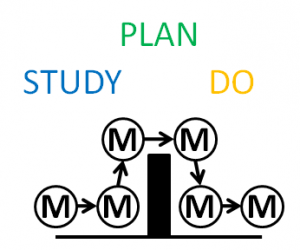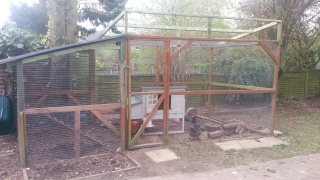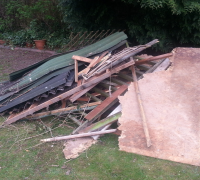 Chickens make interesting pets. They have personalities – no two are the same – and they produce something useful and valuable. Eggs. Yum yum!
Chickens make interesting pets. They have personalities – no two are the same – and they produce something useful and valuable. Eggs. Yum yum!
But chickens are yummy too … especially to foxes. So we have a problem. We need to keep our ‘chucks’ safe and that means a fox-proof coop.
Here’s a picture of a chicken coop … looks great doesn’t it? You can just hear the happy clucks and taste the fresh eggs.
Have you any idea how complicated, difficult and expensive this would be to build from scratch?
Better not even try … just reach for the laptop and credit card and order a prefabricated one. Just assembling the courier-delivered-flat-packed-made-in-China-from-renewable-forest-softwood coop will be enough of a DIY challenge!
We have had chickens for years and we have learned that they are very funny-feathered-characters-who-lay-eggs.
And we started with an old Wendy house, some softwood battening, some rolls of weld-mesh, a bag of screws and staples and a big dollop of suck-it-and-see.
The first attempt was Heath-Robinson but it worked OK. The old Wendy house was transformed into a cosy coop and a safe-from-foxes chuck run.
And the eggs were delicious and nutritious.
But the arrow of time is relentless, and as with all organic things, the “rot had set in”.
The time had come for an update. Doing nothing was not an option.
Q: Start from scratch with a blank piece of paper and design and build a new coop and run (i.e. scrap the old one)? Or re-purpose what we have (i.e. cut out the rot, keep the good stuff and re-fashion something that is fit-for-purpose for years to come?
Oh, and we also need to keep-the-ship-afloat in the process – i.e. the keep the chucks safe-from-foxes and happily laying eggs. That meant doing the project in one day.
What was interesting about this mini-transformation project was that I could apply exactly the same improvement framework as I would to a health care systems engineering one.
 I had a clear problem (unsafe, semi-rotten chicken coop) and a clear purpose (fit-for-purpose and affordable coop and run).
I had a clear problem (unsafe, semi-rotten chicken coop) and a clear purpose (fit-for-purpose and affordable coop and run).
Next I needed a diagnosis. What was rotten and what was not? And that required a bit of poking with a probe … and what I found was that most of the rot was hidden!
First I needed to study the problem (symptoms) and the purpose (required outcome) and the problem again (disease).
This was going to require some radical surgery!
With a clear destination and diagnosis it was now time to plan. For this I needed a robust design framework for exploring “radical” options – particularly those that open new opportunities that the old design prevented! This is called “future-proofing”.
And the capital cost is always a factor – building a shiny, high-tech version of an old design that is no longer fit-for-purpose is a waste of capital investment and locks us into the past.
And remember, the innovative, fit-for-purpose, elegant, affordable design is just a dream when it is still only a plan. Someone has to do the building work. And it has to be feasible with the time, tools and skills available. And all that needs to be considered at the design stage too!
With the benefit of hindsight, I have come to appreciate that the most valuable long-term investment is the new theory, new techniques, new tools and the new skills to use them. This is called “innovation”.
So with a diagnosis, a design, a sunny day, a sharpened-pencil-behind-the-ear, a just-in-time delivery of the bulkier building materials, a freshly charged power drill, and a hot cuppa … the work started.
It was going to be like performing a major operation.
The chucks were more than happy to be let out to scratch around in the garden; and groundwork always generates the opportunity for a creepy-crawly feast! But safety comes first – foxes mainly hunt at night so in one daylight period I had to surgically excise the rot and then transform what was left into a safe space for the chucks to sleep.
When the study and plan work has been done diligently – the do phase is enjoyable.
If we skip the study phase and leap straight to plan with all the old assumptions (some rotten some not) still in place … the do phase is usually miserable! (No wonder many people have developed a high level of aversion to change!).
And the outcome?
 Happy chucks, safely tucked up in their transformed, rot-free, safe-from-harm, coop and run.
Happy chucks, safely tucked up in their transformed, rot-free, safe-from-harm, coop and run.
The work is not quite finished – a new roof is awaiting installation but that is a quality issue not a safety one.
Safety always comes first.
And just look at how much rot had to be chopped out.
Any surgeon will tell you … “for the fastest recovery you have to cut out all the rot first“.
And that requires careful planning, courage, skill, a sharp blade, focus and … team work!

